#peshawar
Text
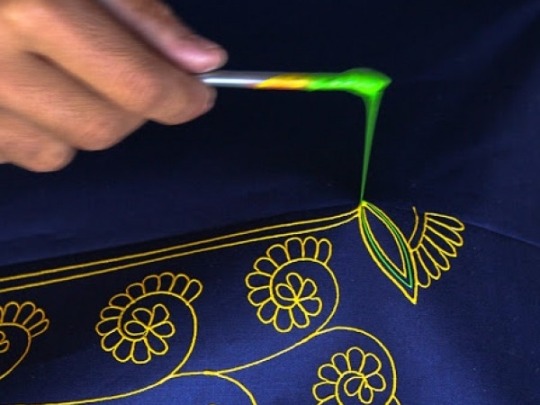
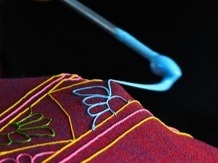
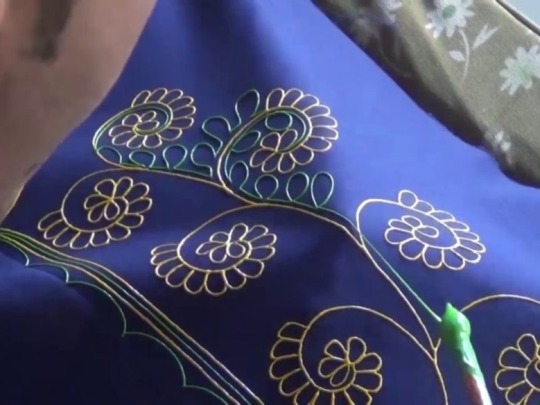


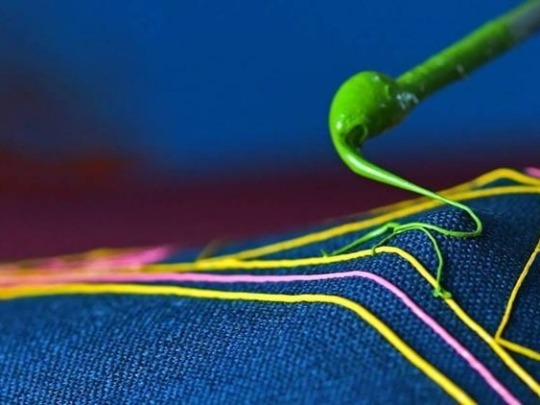


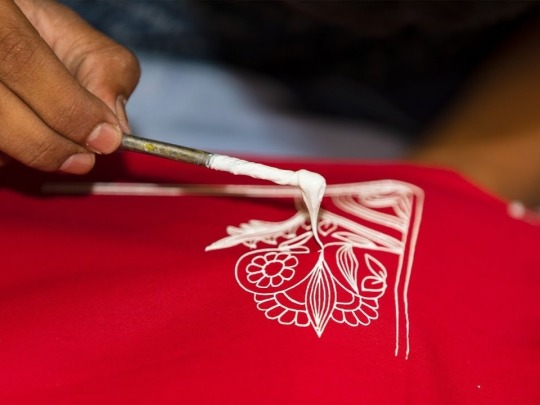

Rogan is an technique of cloth printing practiced in the Gujarat, Peshawar and Sindh regions of India and Pakistan. The word rogan has roots in both Persian and Sanskrit, meaning oil. In this craft, paint is made from boiled castor oil or linseed oil and vegetable dyes is laid down on fabric using a stylus.
The process of applying this oil based paint to fabric was developed among the Khatri community in Gujarat and the techniques of preparing and applying dyes was passed down in the family. As rogan printed cloth tended to be less expensive than other heavily embroidered garments but could still produce the illusion of embroidery, it was the wedding garment of choice for women from poorer families. The craft nearly died out in the late 20th century with the availability of cheaper and machine-made textiles. However, it is currently being revived mostly due to the efforts of the artist Abdulgafur Khatri and his family, who work tirelessly to spread awareness about Rogan art and teach it to young people, mostly young women from poor families in order to empower them by providing a means of livelihood as well as keeping the art of rogan alive.
1 / 2 / 3 / 4 / 5 / 6 / 7 / 8 / 9 / 10 / 11 | textile series
#ots#textiles#indian textiles#textile history#textile art#art printing#rogan art#gujarat#india#pakistan#south asia#desi tumblr#desiblr#sindh#peshawar#desi tag
1K notes
·
View notes
Text
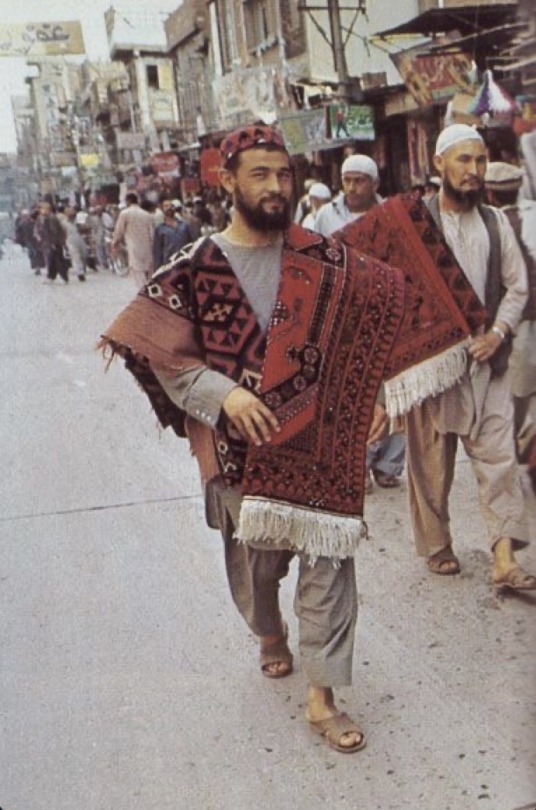
Ethnic Turkmen from Afghanistan selling their hand-made rugs in the streets of Peshawar, Pakistan.
#Peshawar#turkmen#afghan#Pakistan#khyber pakhtunkhwa#afghan rugs#i stole this from twitter buts its fine we hate twitter#pekhawar#kpk#nwfp#Afghanistan#own post
201 notes
·
View notes
Text
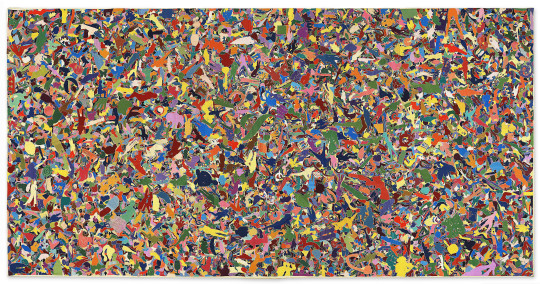
Alighiero Boetti, "Tutto" 1990,
Embroidery on Linen, 86 1/2 x 170 1/4 in. (219.7 x 432.4 cm.)
In the spring of 1971, while in search of “something distant”, Alighiero Boetti discovered Afghanistan. This was the beginning of a relationship that tied the man and his work to the Afghan people for 23 years until the artist’s death in 1994.
Boetti maintained these links during the period of exile following the Soviet invasion of 1979, even welcoming some of his assistants into his own family in Italy.
Afghanistan is the scene of the production of many of Alighiero Boetti’s best-known works, including the Mappe (1971-1994), made by female Afghan embroiderers.
His artistic intentions, his experience of the country and his intellectual curiosity give rise to works that act as cultural and geopolitical seismographs.
His work bears witness to the socio-political transformations that affected the Middle East in the 1970s and 1980s, seeing, for example, the embroiderers flee to Peshawar in Pakistan, where some of the last embroideries were produced.
#art#abstract#abstraction#forms#fabric#embrodery#alighiero boetti#all#tutto#tornabuoni art#salman ali#afghanistan#political#afghan#socio-political#middle east#peshawar
34 notes
·
View notes
Text
Army Public School attack, Peshawar. (Dec 16, 2014)
144 dreams ,144 families, 144 children
All gone within an hour.
"Smallest coffins are the heaviest."
Hum nahi bhoolay 💔
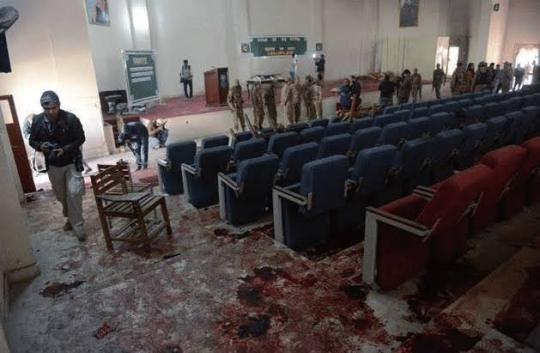


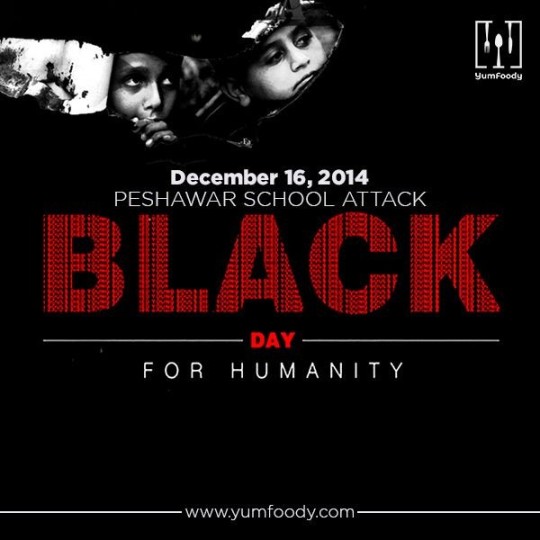
#aps attack#Army Public School Peshawar#black day#bara dushman bana phirta hai Jo bachon se larta hai#pakistan#peshawar#desi tumblr#desi tag#desi
11 notes
·
View notes
Text

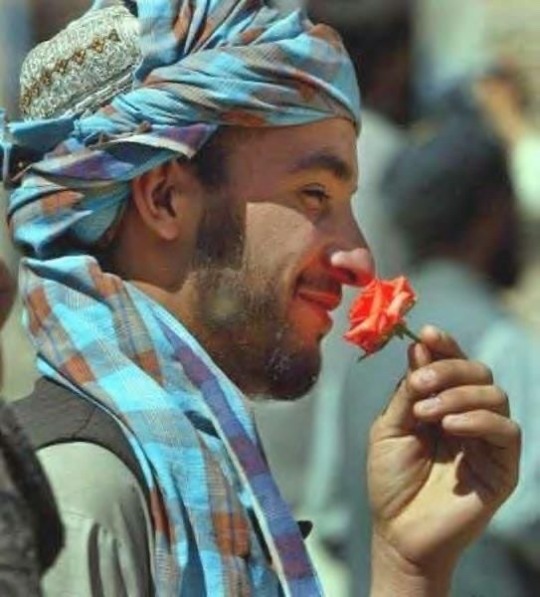
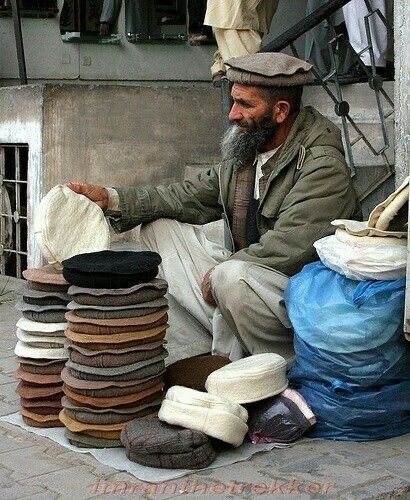
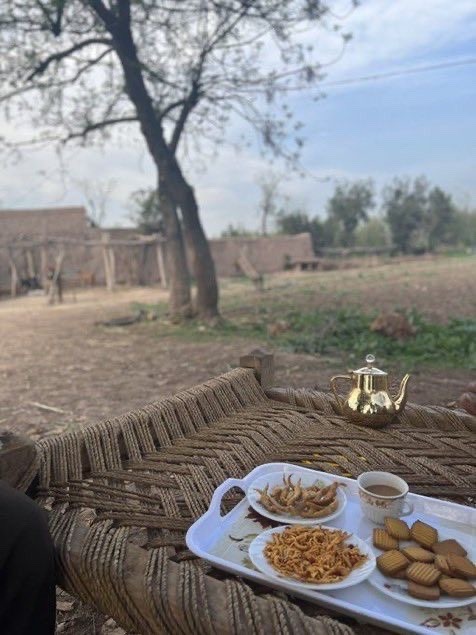
Ma pata da pukhto pa rewajunu ka dildara
- beloved! cover me in the customs of pakhto
#pashto#pashto literature#pashto poet#pashto poetry#peshawar#afghanistan#kpk#pashtun#khyber pakhtunkhwa#pukhtun#culture#native tribe#mardan district
76 notes
·
View notes
Text

Muslims assembling for flight to Kabul during the Khilafat Movement around 1920 in Peshawar, Pakistan
British vintage postcard
#the khilafat movement#old#postcard#postkaart#kabul#peshawar#british#khilafat#vintage#briefkaart#postal#ansichtskarte#muslims#ephemera#photography#photo#pakistan#postkarte#tarjeta#movement#historic#sepia#assembling#around 1920#flight#carte postale
5 notes
·
View notes
Text
Hippie Tourists : Peshawar

Taliban, who? No, this is not an image from a bygone hippie flick. It is a picture of real hippies enjoying a few puffs of hashish on the roof of a cheap hotel in Peshawar in 1972. Yes, Peshawar.
#oldpakistan#puranapakistan#vintagepakistan#retropakistan#alsopakistan#pakistan#vintagephotography#90spakistan#hippies#hippietourists#druggie#peshawar#hippie hobos#hippietourism#hippiestyle#druggies#hippie druggies#hashish#smoking hasish#smoking
4 notes
·
View notes
Text
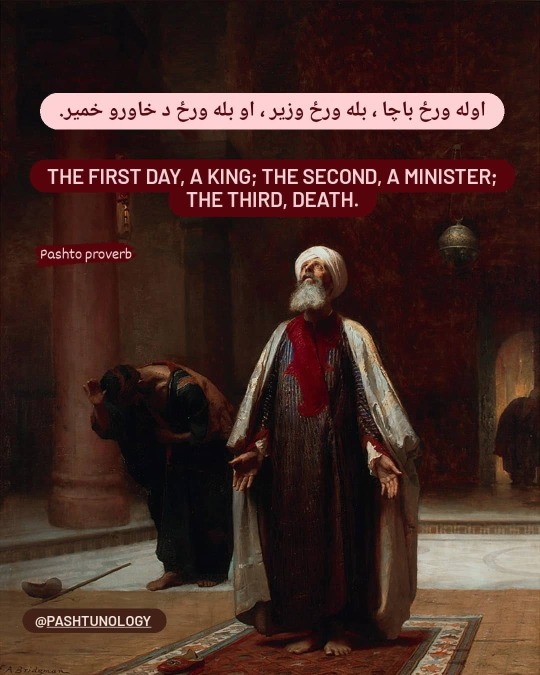
Transliteration:
"Awala wraz baachaa, bala wraz wazir, aw bala wraz da khawro khamir"
The cycle of life is joy, worry and death. A youth is considered free of worry and free to enjoy himself, such as a king should be. The mature man, like a Prime Minister, has the responsibilities and worries attendant upon administering a country.
Alternatively, it is about the untrustworthiness and changing scenarios of life.
The idiom used for death is literally "the yeast (leaven) of dirt" (khawro khamir). When Pashtuns make bread (nän), they leaven it by adding a little bit of yeast (khamir) kept back from the previous batch. In the picturesque language of this rhyming proverb, even the mighty king and wazir (minister) become khamir (yeast) that is added to the earth as part of the cycle of life.
This proverb reminds me of a couple of lines by Ghani Khan.
پرون تخم وم، نن ګل یم، سبا بیا به خاؤره کېږم
زه د باد یوه څپه یم، په صحـــــرا په باغ تېرېږم
"Yesterday a seed, today a flower, tomorrow I’ll turn to dust;
I am a gust of wind blowing over the desert garden"
#afghanistan#pashto#pashtun#afghan#art#literature#proverbs#idioms#pashto poetry#poetry#middle east#central asia#افغانستان#khyber pakhtunkhwa#kandahar#kabul#peshawar#pashtunology
32 notes
·
View notes
Text
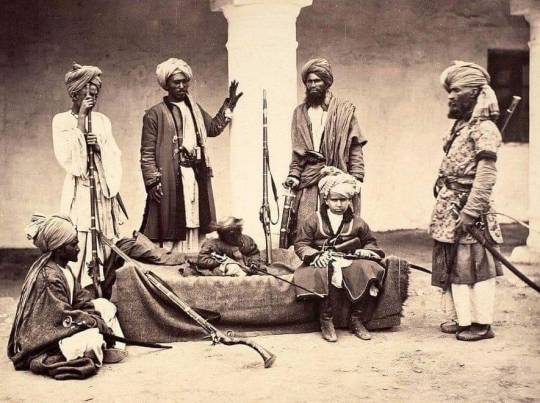
A group of Pathans from Peshawar valley. This photograph was taken by Samuel Bourne in 1860s.
2 notes
·
View notes
Photo

"Atmaran, Hindoo of Peshawar"
Coloured lithograph based on the work of James Rattray
"Atmaran, Hindoo of Peshawar" is the title of a coloured lithograph made by E. Walker (d. 1882), based on the work of James Rattray (1818-1854), who was based in Afghanistan during the First Anglo-Afghan war (1838-1842). Atmaram was a Hindu from Peshawar in modern northern Pakistan, who had become the 'minister' of a local Muslim and Uzbek ruler in northern Afghanistan, Mohammed Murad Beg of Kunduz.
The “Dewan Begi, Atma Ram”, was already a very powerful position when the British veterinary and explorer, William Moorcroft, visited northern Afghanistan in 1824. Another British explorer, Alexander Burnes, stayed with him in 1832, while on his way to Bukhara. When Burnes and his entourage left Kunduz and said goodbye to Atmaram, he "sent a khillut, or dress of honour…" Burnes tells that all of the affairs of Murad Beg were managed by Atmaram. He was a Hindu of low origin, a shopkeeper from Peshawar. The artist Rattray tells about Atmaram that he was “a sly-looking old fellow, countenance beaming with cunning and intellectual fire", and that he "never betrayed his master's trust".
He is wearing a beautiful turban of dark red material wound around a kalpak (a pointed cap particular to the Uzbeks), a magnificently gold thread embroidered mantle of the choga style, possibly with appliqué; a gown and a shirt underneath. The gown may be made of ikat. He has shoes or leather boots with high pointed heels and a single line of large white stitches on the heel, adding a decorative element. Behind him hangs his Indian style sword and a decorated shield. There is also a belt with various pouches attached, with embroidered flaps.
Interesting are the red lines painted on the man’s face. By birth this man was Hindu, and he apparently retained the markings of his caste, although at the same time wearing a turban and a kamarband, among the Uzbek at that time normally reserved for Muslims. Atmaram is sitting on the roof of a house, looking down into the courtyard, made pleasant by a pond and tree. The house may be his own. If so, this was perhaps the place where Alexander Burnes and his following resided when they were en route to Bukhara.
#click to enlarge#such good quality so much detail#hindu#peshawar#Pakistan#James Rattray#history#art#e. walker#Atmaram
19 notes
·
View notes
Text

Swami Ramanand used to follow a practice of mental worship, by imagining an idol of Vishnu Ji. The first time in his entire life span, he forgot to put on the kanthi mala (necklace that has one leaf of tulsi) on the idol of Thakur Ji. At that time, Lord Kabir was playing a leela in the form of a 5 years old child and told him to open the knot of the kanthi mala and then tie it around the neck of Lord Vishnu. This way, your practice will be successful. Swami Ramanand was doing this mental worship behind the curtain. As soon as he heard these words of Lord Kabir, he hugged Him in front of everybody. Mann ki pooja tum lakhi, mukut maal parvesh.Garibdas gati kaun lakhe, kaun varan kya bhesh.
#kandahar#ghazipur#herat#kabul#balkh#afghanistan#santrampaljimaharaj#godkabir#allah is kabir#satlokashram#pakistan#islamabad#peshawar#india#motivation#ai art#spn
3 notes
·
View notes
Text




Female medical students, Peshawar, early 80s
#medical students#women in medicine#Peshawar#pekhawar#khyber medical college#khyber pakhtunkhwa#kpk#north west frontier province#pashtun#80s#Pakistan#this is somewhere between 1979 and 1984#own post
231 notes
·
View notes
Photo

Are you Looking for Platinum special yet elegant birthday, Mehndi, Barat, Walima decor? You are at right spot. We are operating in Islamabad, Rawalpindi, Peshawar, Lahore & across the nation. For reservation call us or whatsapp business 03218567915 or drop us a text on WhatsApp at 03335558915, 03335546918 #platinumeventsmanagement #dinnerdate #coupledate #anniversary #engagement #nikah #wedding #decor #romanticdecor #birthday #bridetobe #bridalshower #Lahore #Peshawar #pakistan #babyshower #surprise #eventdecor #eventplanner #islamabad #rawalpindi #lahore #elegent #themedbirthday #mehndi #bridalshoot #trending #eventmanagement #bestdecor #customized (at Islamabad, Pakistan) https://www.instagram.com/p/CjKsQUFjE3c/?igshid=NGJjMDIxMWI=
#platinumeventsmanagement#dinnerdate#coupledate#anniversary#engagement#nikah#wedding#decor#romanticdecor#birthday#bridetobe#bridalshower#lahore#peshawar#pakistan#babyshower#surprise#eventdecor#eventplanner#islamabad#rawalpindi#elegent#themedbirthday#mehndi#bridalshoot#trending#eventmanagement#bestdecor#customized
9 notes
·
View notes
Text
Peshawar mosque bombing
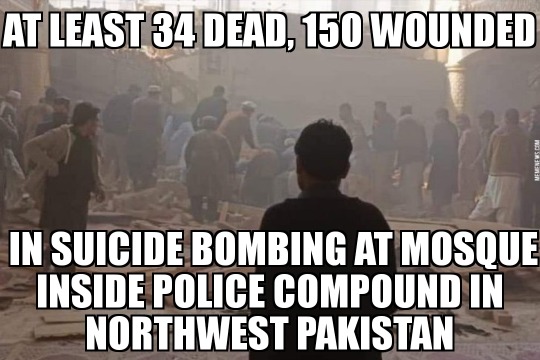
View On WordPress
#asia#islam#law enforcement#meme#memes#middle east#mosque#muslim#news#pakistan#peshawar#police#religion#suicide bomb#terror#terrorism
4 notes
·
View notes
Text

For more updates Join Telegram : https://t.me/TipsToBetting
For latest Blogs/Posts : www.tipstobetting.com
🎁 Don’t forget your promo code 𝐆𝐞𝐭𝐌𝐨𝐧𝐞𝐲𝟏𝐱𝐁𝐞𝐭 to get up to 𝟮𝟲𝟬𝟬𝟬 𝗜𝗡𝗥 | 𝟏𝟎𝟎 𝐄𝐔𝐑𝐎 Welcome Bonus
#getmoney1xbet#1xbetpromocode#1xbet online#1xbetbonus#tipstobetting 1xbetbonus casino#casinogames#casino#live casino#onlinecasino#download poker#worldcup t20#pslt20#psl2023#peshawar#karachi#final fantasy series#psl
2 notes
·
View notes
Text
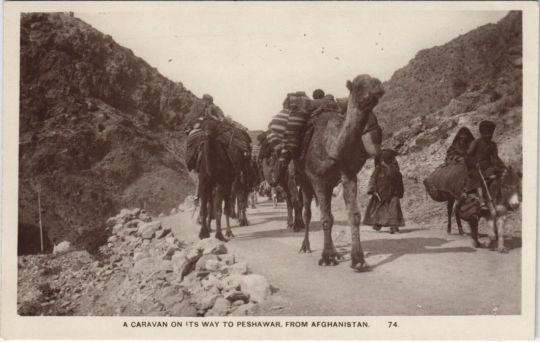
Caravan from Afghanistan, on its way to Peshawar, Pakistan
British vintage postcard
#carte postale#old#ansichtskarte#british#photo#vintage#postkaart#photography#afghanistan#briefkaart#postkarte#way#ephemera#caravan#postcard#sepia#pakistan#postal#peshawar#tarjeta#historic
12 notes
·
View notes